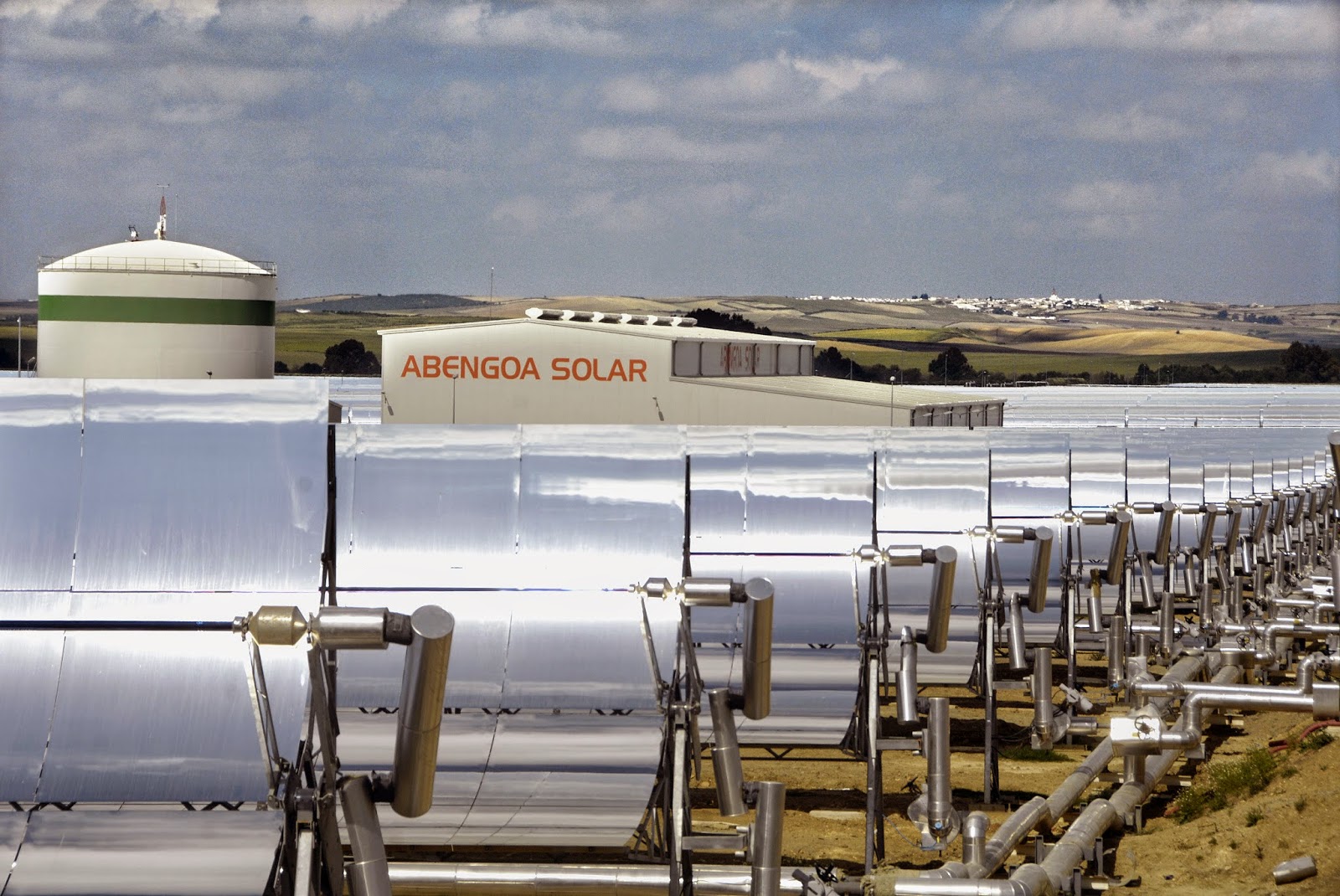KaXu Solar One es la primera central termosolar en operación comercial de Sudáfrica.
Abengoa, compañía internacional de energías renovables y la financiera estatal, la Industrial Development Corporation (IDC), junto con KaXu Community Trust, han inaugurado hoy una central termosolar de 100 MW cerca de la ciudad de Pofadder (en la provincia de Northern Cape), con capacidad para abastecer de energía solar limpia y sostenible a aproximadamente 80.000 hogares de Sudáfrica.
Ebrahim Patel, ministro de Desarrollo Económico, ha inaugurado oficialmente esta termosolar. El acto ha contado también con la asistencia de Bulelani Magwanishe, viceministro de Empresas Públicas; directivos de Abengoa y de IDC y representantes de la comunidad local.
KaXu Solar One, la primera termosolar de Sudáfrica, incorpora un sistema de almacenamiento que permite la generación de 100 MW durante 2,5 horas tras la puesta del sol o durante la noche. El proyecto supondrá una inversión directa e indirecta de aproximadamente 891 M$ para Sudáfrica, generará aproximadamente 516 M$ en impuestos durante los próximos 20 años y ha creado más de 1.000 empleos durante el periodo de construcción durante estos tres años.
Este proyecto, una iniciativa público-privada, fue adjudicado por el Departamento de Energía de Sudáfrica y suministrará electricidad limpia y fiable a Eskom, la compañía eléctrica de Sudáfrica, en virtud de un acuerdo de compra de energía con una duración de 20 años. Abengoa es propietaria del 51 % del proyecto, IDC del 29 % y KaXu Community Trust del 20 %.
Manuel Sánchez Ortega, vicepresidente y consejero delegado de Abengoa, ha manifestado que "estamos muy orgullosos del papel que estamos jugando, colaborando con Sudáfrica para satisfacer su continua demanda de energía. Este proyecto beneficiará a la comunidad de Pofadder, Northern Cape, y a todo el país. No habría sido posible llevarlo a cabo sin el liderazgo y apoyo del Departamento de Energía de Sudáfrica”.
El director ejecutivo de la IDC, Geoffrey Qhena, ha declarado que "el proyecto se basa en una sólida asociación entre el sector público y el privado y forma parte de nuestros esfuerzos para apoyar las iniciativas del Gobierno para introducir fuentes de energía alternativas en la red energética del país, tal y como se contempla en el plan de recursos integrados”.
Fadiel Farao, presidente de KaXu Community Trust, considera que KaXu Solar One será un catalizador para el desarrollo económico del municipio de Khai Ma en Northern Cape. "El proyecto ha estimulado la economía local y va a ayudar a generar las tan necesitadas oportunidades económicas para los habitantes de esta área". KaXu Community Trust está compuesta por miembros de la comunidad local.
Abengoa también está desarrollando en esta región Khi Solar One, una central termosolar de 50 MW con tecnología de torre y ya ha comenzado la construcción de un tercer proyecto, Xina Solar One, una termosolar de colectores cilindroparabólicos de 100 MW. Xina Solar One junto a KaXu Solar One formarán la mayor plataforma de energía solar del África Subsahariana.
termosolar, Concentrated Solar Power, Concentrating Solar Power, CSP, Concentrated Solar Thermal Power, solar power, solar energy, Abengoa, protermosolar, España, Sudáfrica, Kaxu Solar One, África,





















 A large portion of 2015 installations are expected to come from the 700 MW Phase II Batch 1 projects, which are due to be commissioned in May of this year. Also, looking at the timeline for the last Batch, it takes approximately 19 months from RFS (request for submission) approval to the commissioning date, which means that for 2016 to be a big year the next three months will be crucial for these policies to be finalized and RFS' approved.
A large portion of 2015 installations are expected to come from the 700 MW Phase II Batch 1 projects, which are due to be commissioned in May of this year. Also, looking at the timeline for the last Batch, it takes approximately 19 months from RFS (request for submission) approval to the commissioning date, which means that for 2016 to be a big year the next three months will be crucial for these policies to be finalized and RFS' approved. 


